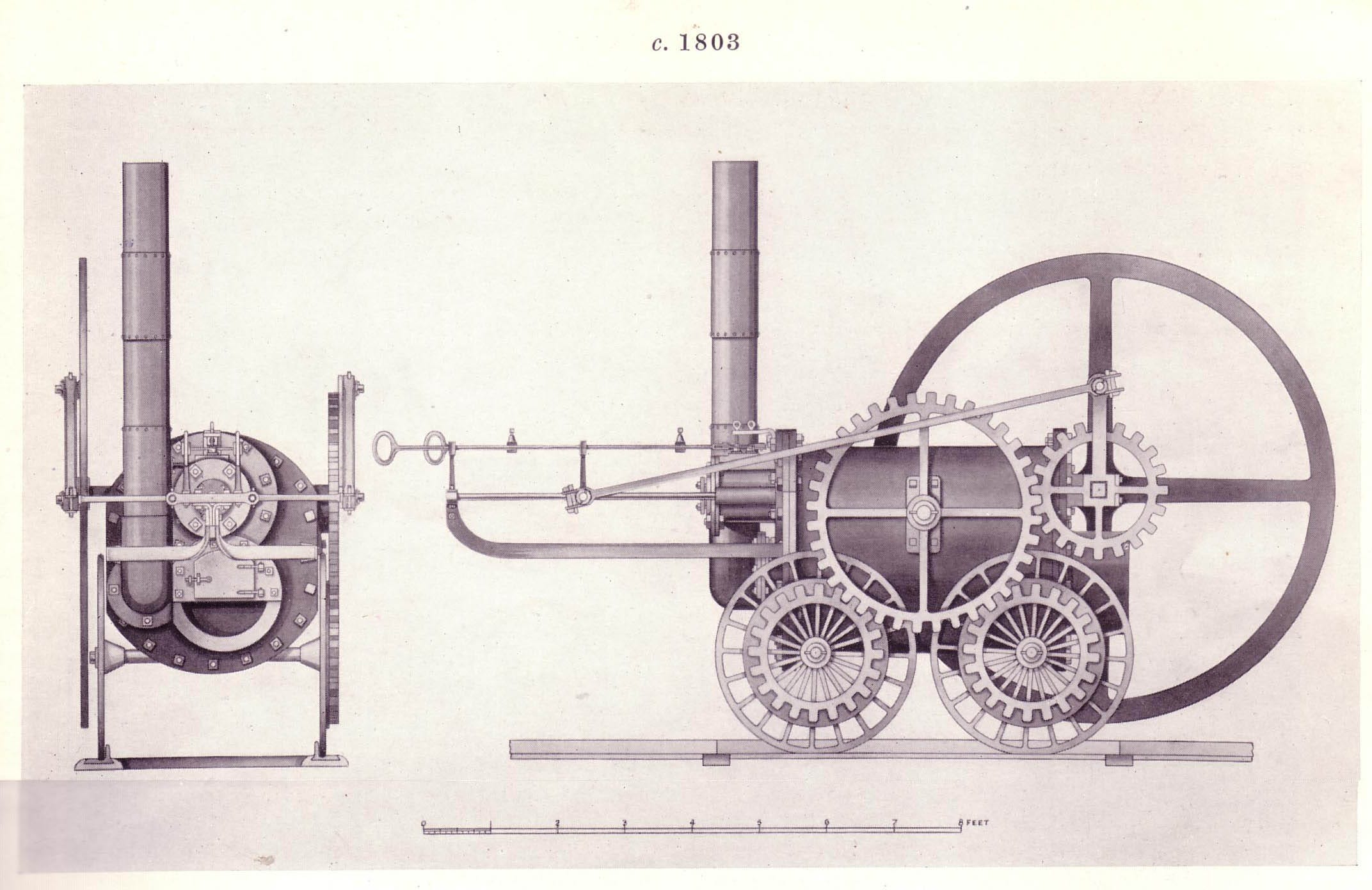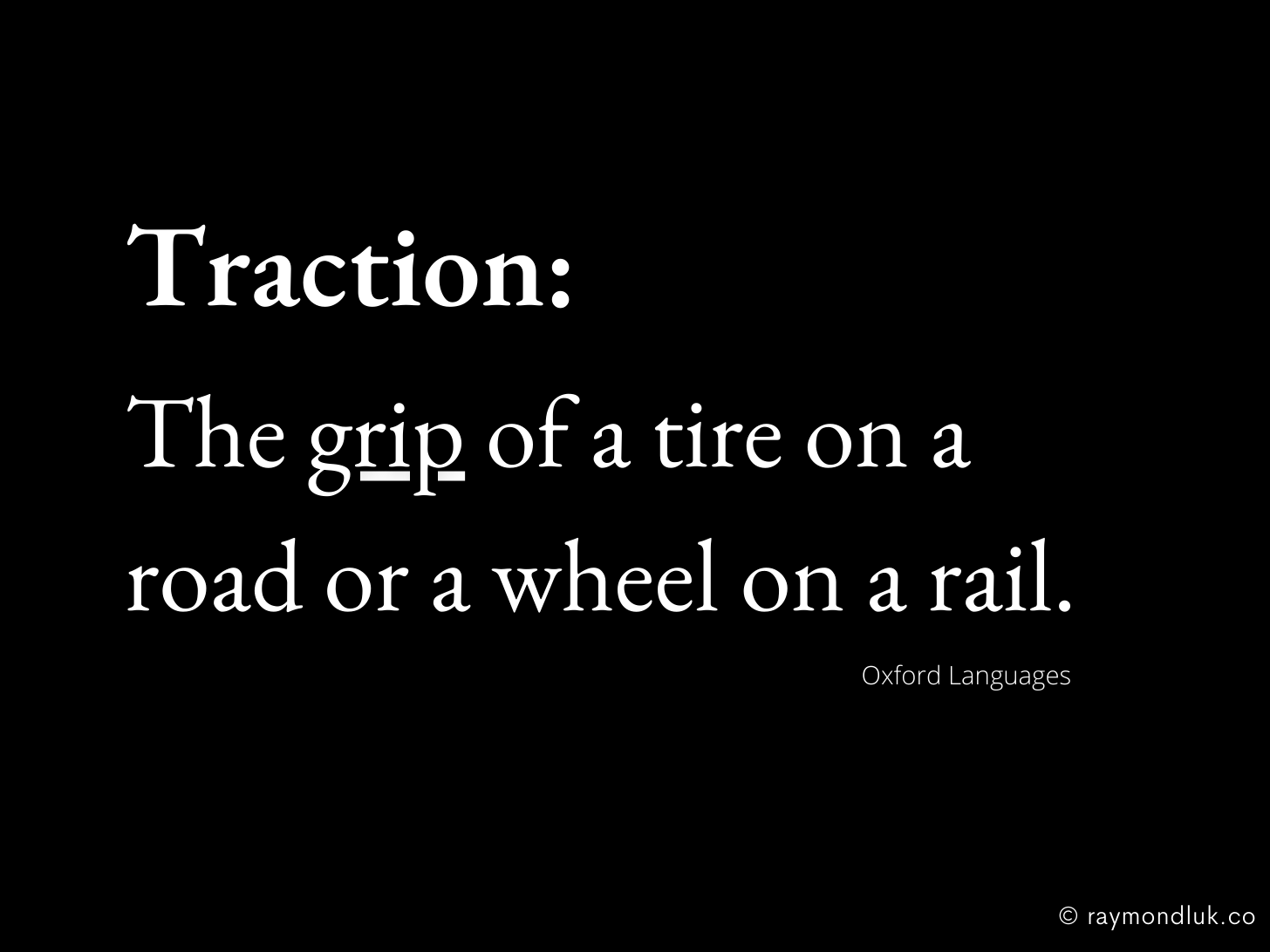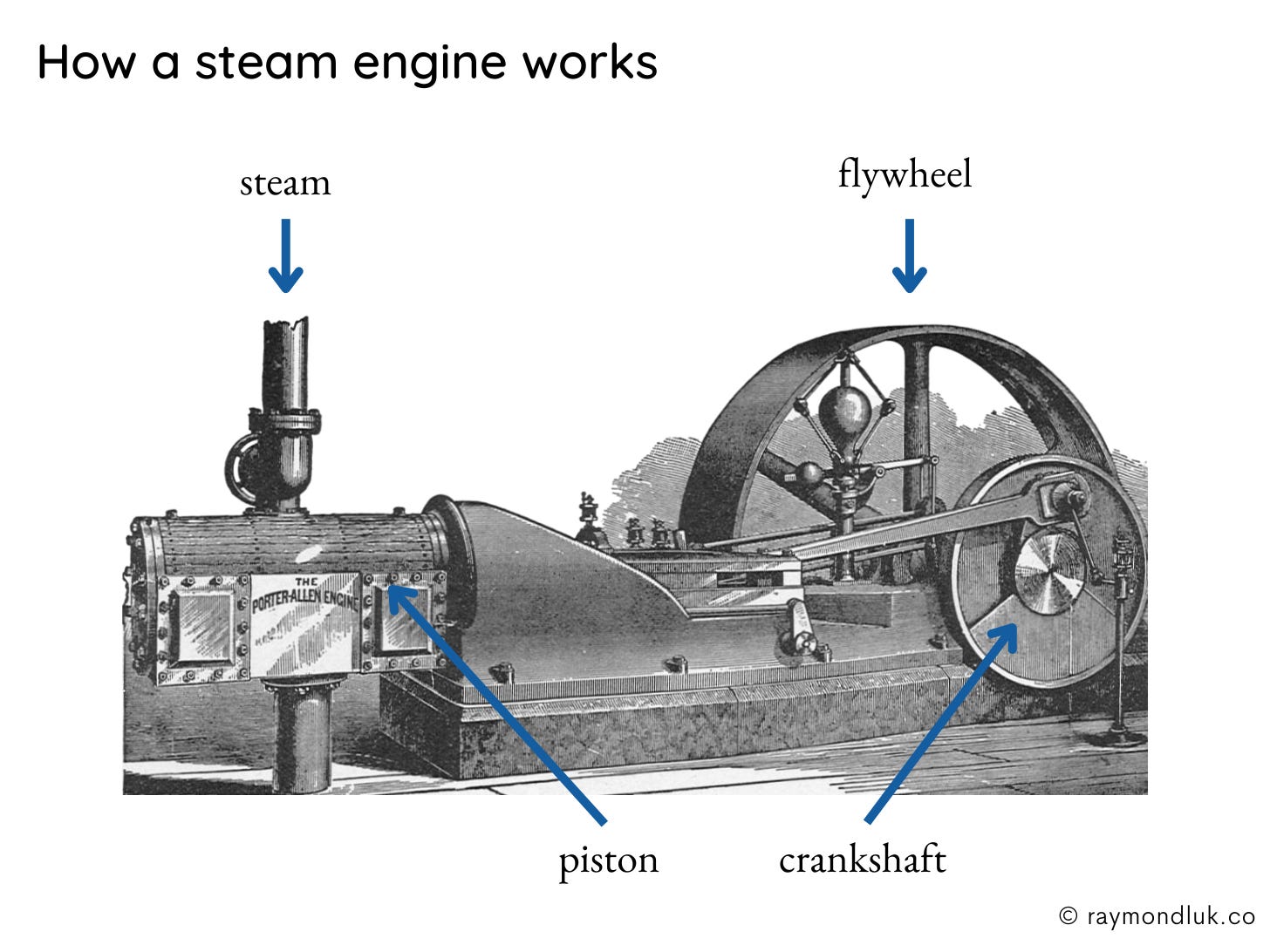This is part 11 of a series that walks through the slides in a pitch deck. See Start With the Problem, and Your Startup’s DNA: The Solution Slide, How Not to Waste Your Product Slide, Why Now: Change is the Key to your Pitch, The Market Size Dilemma, How Not to Lie To Yourself About Competition, Telling the Story of How You Make Money, You've built a better mousetrap, now you need to go to market, How to talk about financial projections in your pitch deck, and How to think about the team slide.

On Tuesday, 21 February 1804 Richard Crawshay, a Welsh businessman, lost 500 guineas (about $126,000 today) on a bet. He thought a steam locomotive wouldn’t move because its wheels would spin and go nowhere. At the time, many people believed that trains running on iron wheels would not have enough traction on iron rails.
When investor and engineer Richard Trevithick Jr.’s steam engine ended up hauling 25 tons that day, history was made, as was some money.
It turns out the wheels had enough traction, the steam locomotive worked, and a new industry was born, replacing horses and canals as the primary means of hauling goods.1
Startup lingo borrows many terms from the mechanical age: friction, leverage, flywheels and traction. When it comes to startups, traction means how well the product or company is working. It’s the proof.
Whoever applied the term ‘traction’ to startups knew exactly what they were doing. We’re going to find out why that’s the case and use this history lesson to help improve your traction slide.
Key points I cover:
- The definition of traction
- A diversion into 19th century steam engines
- Three ways to talk about your traction
- Things not to do
Subscribe for free to receive weekly posts about pitching, a copy of my ebook Pitching a Leap of Faith, and invites to my Pitch Masterclass.
Definition of traction

Traction means grip. Trevithick won the bet because his steam locomotive had enough grip to get the train moving and keep it moving forward.
When you are thinking about ways to convince investors your startup is starting to work, think about grip. More than revenue, client wins, downloads or low churn, traction means something is sticking enough to move your whole enterprise forward.
That’s pretty important to an investor making a bet on an unproven startup.
Traction vs flywheel
I talked about the flywheel concept in my post on the Business Model. When it comes to traction, it’s tempting to want to say that everything is already working amazingly. The machine is running smoothly.
But that’s not exactly what you need to communicate with your traction slide. You don’t need to prove it’s already a flywheel (I guarantee you it’s not yet). You just need to show you have a start, which is difficult enough.
Let’s go back to the age of steam. And by the way, why shouldn’t cutting-edge tech startups rely on 200 year-old metaphors?

In the illustration:
- Steam powers the engine
- The piston and crankshaft convert that force to turn a flywheel
- The flywheel stores some of that energy to keep the engine working and powering the wheels
If your startup was this steam engine, your Traction slide would focus on how you’ve successfully converted steam into motion and the flywheel is starting to turn. Right now it doesn’t matter how quickly or efficiently that flywheel is turning. That’s for later.
What you want to focus on is how you’ve overcome all kinds of things, from exploding boilers to broken pistons, to get your machine moving. That’s amazing and unexpected, which is why Trevithick found someone to bet 500 guineas against him.
If you are doing something new and innovative, what investors are looking for is proof you’ve been able get started in spite of the obstacles. So let’s talk about how to do that.
Three ways to talk about your traction
One of the unfortunate byproducts of the SaaS-ification of VC metrics is the idea that standard metrics show who the better startups are (I’m looking at you CAC:LTV). Remember past results do not guarantee future performance.
Even if your metrics over the last six months are great, that’s not telling the true story of your traction. Here are three things to focus on:
Degree of difficulty
The more difficult the challenge the more impressive that you’ve overcome it. E.g. instead of having 10 client logos, pick the one that was the most difficult to close and tell that story. Having gone through regulatory screenings, pilot projects and beating out other vendors in a competitive bid is more evidence of traction than a bunch of logos.
This also means that technical breakthroughs are traction, especially if your product is years away from market.
Repeatability
For SaaS products, not all product metrics are relevant traction. But some are, like unusually high daily active use. Your startup may not yet be a well-oiled flywheel but explain why users of your early product, bugs and all, keep coming back.
This is also true in services, consumer goods and retail where repeat buyers are an indicator you’ve built a (small but) loyal following. The point is it doesn’t matter that your numbers are small. Once you have truly meaningful traction you can add more steam to spin the flywheel faster.
Something unusually great
The rush to standardization can make startups hide their best stories. One startup I worked with was so focused on proving they had great unit costs they forgot to mention they had shipped 15,000 units already.
Another had done a pivot and wasn’t sure how to talk about old traction. But the wins they had in that other industry were even more difficult to achieve and directly led to a better product that opened up a better industry. Investors might have negative opinions about a pivot, which is strange when you think about it, but you’re better off explaining how that traction led to this product.
To summarize: traction is not self-explanatory. A good traction slide should always contain a story that is unique to your startup.
Things not to do
The simple rule for your traction slide is: do not put things that are not traction on this slide. If you are worried about your lack of metrics, that problem is not solved by putting random logos and numbers on your slide.
So make sure you don’t do these things:
- Have logos of accelerators. I love accelerators but they are not traction. Put them on your title page or Team slide.
- Have projections. Projections are not traction. They haven’t happened yet.
- List clients without explanation. Even blue chip clients do not necessarily show you have traction. Explain why those client wins matter.
I’ll bet you five hundred guineas that if you talk about your traction as ‘grip’ and you avoid these mistakes you’ll have a better pitch deck.
« Previous Post: Team || Next post: Title Page, Ask »
Richard Rhodes, Energy, Simon & Shuster, 2018, pages 75-76 ↩




